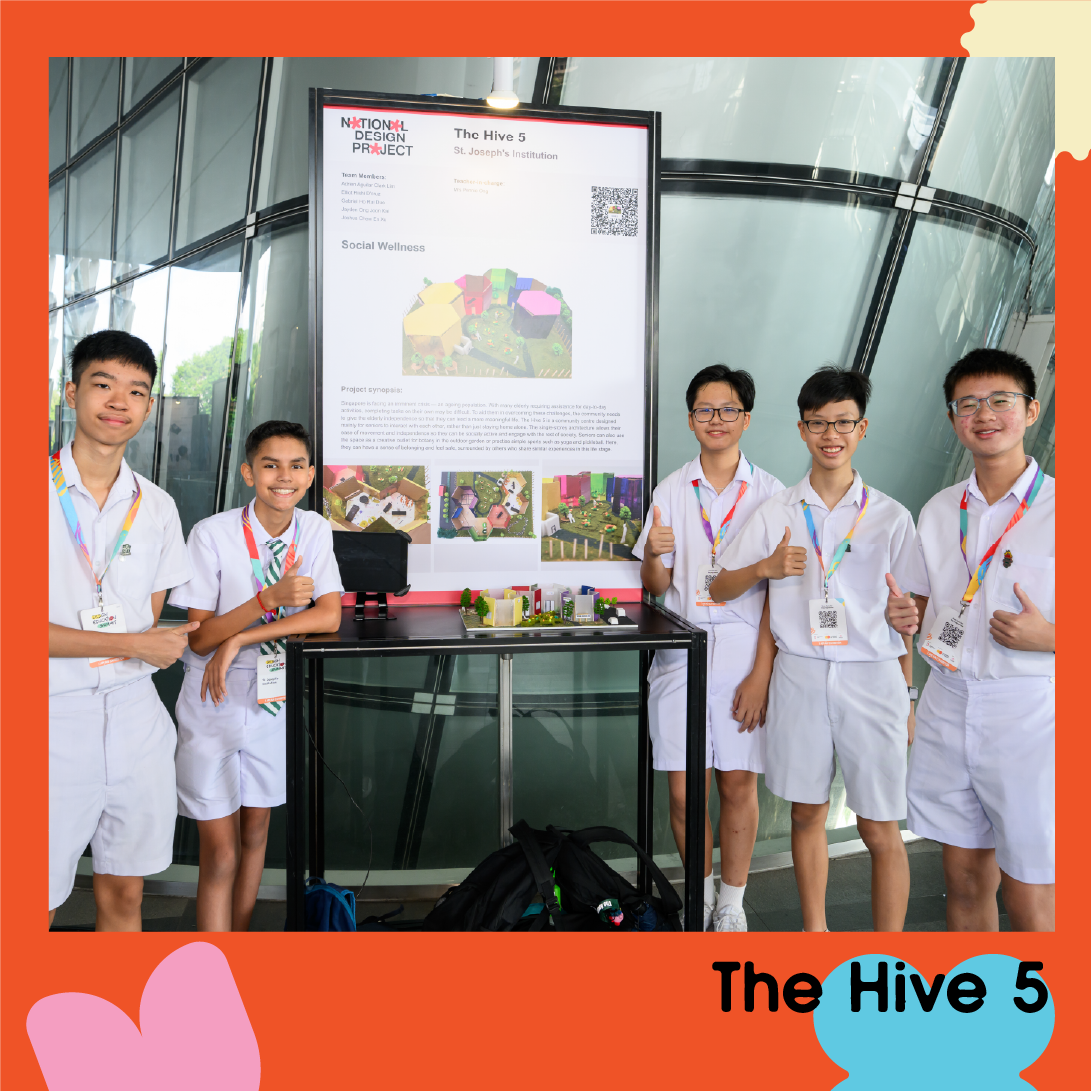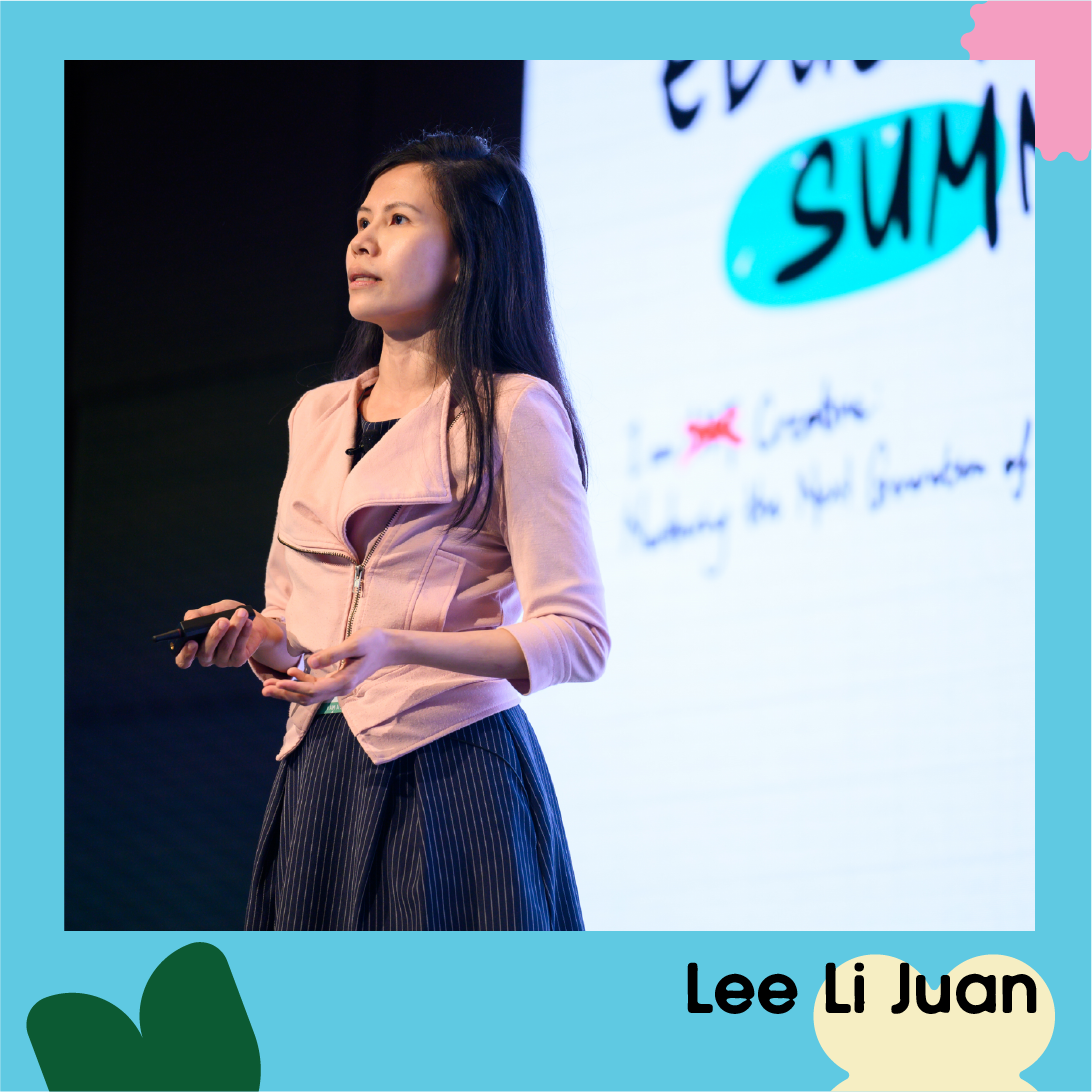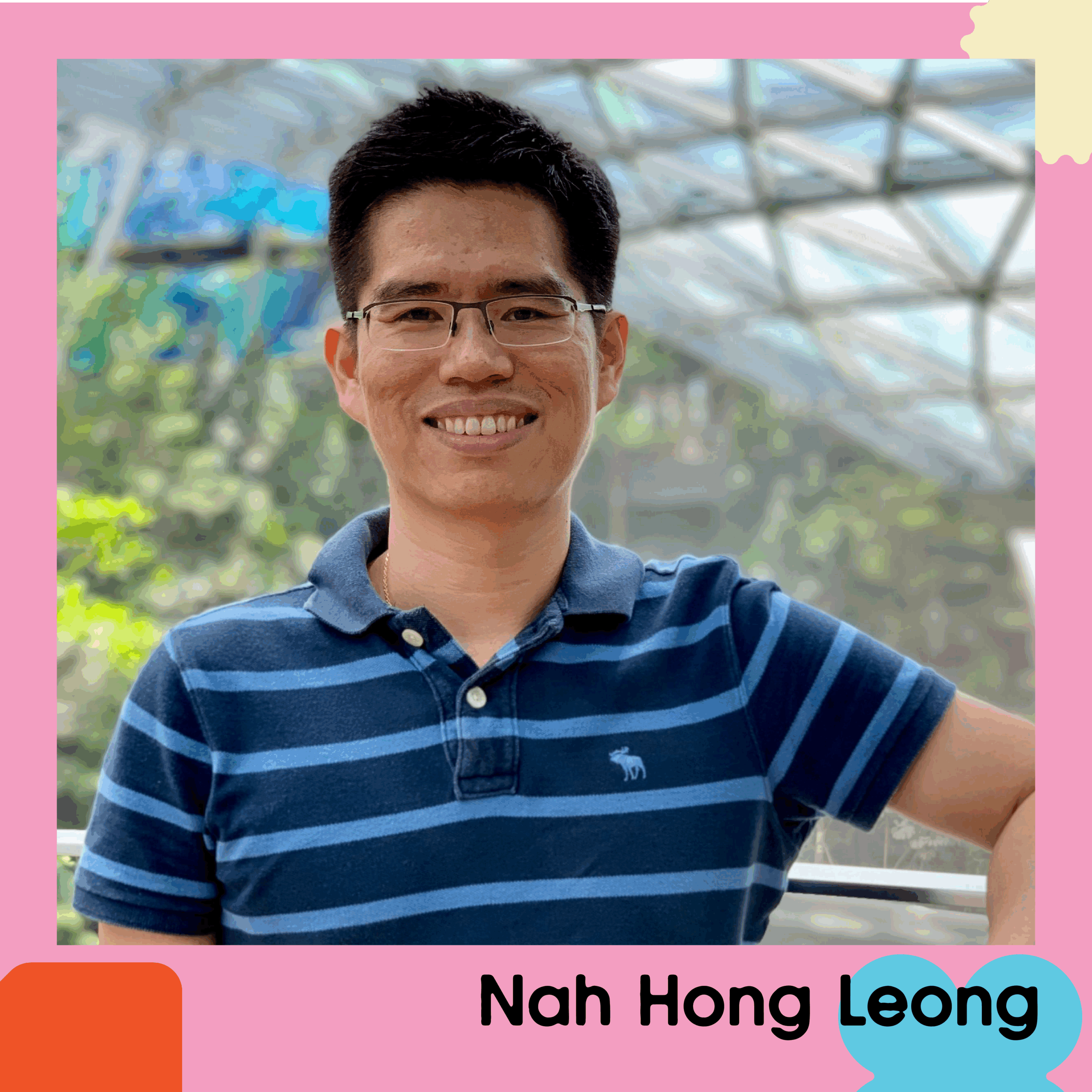For Principal Rebecca Chew, design thinking is the way ahead
For decades, Rebecca Chew has contemplated how schools can best serve future needs. She now makes creative, purposeful teaching and learning a pillar of her leadership at Holy Innocents’ High School.

Rebecca Chew has been the Principal of Holy Innocents’ High School in Hougang since 2018. Photo by Memphis West Pictures.
03 Dec 2024
“Creative, purposeful teaching and learning connects the young person to the new world of sensemaking,” says Rebecca Chew, the Principal of Holy Innocents High School (HIHS). She believes that if today’s youth are to participate as active citizens in the future, they’ll need to learn how to harness much more than knowledge.
If they are to come into their own as changemakers who can design a positive impact in society, suggests Rebecca, they’ll also need to be able to draw on imagination, creativity, and empathy. They’ll need to be curious and adaptive in their thinking. Most of all, they’ll need to be resilient.
Under her values-based leadership, the HIHS school community is geared towards helping students cultivate these hallmark traits of changemakers. “We believe these competencies are critical in light of the changes our students will experience in the future of learning and work,” says Rebecca.
It’s little wonder, then, that she has warmly embraced design thinking at HIHS. She has integrated it into the curriculum with projects focused on improving the school environment, and used it to enhance teaching and learning. She’s certain it’s having a positive effect on the lived experiences of students at the school.
“The ability to generate one idea and use it to inspire many more reflects the boundless possibilities of the future.”
Rebecca Chew
HOLY INNOCENTS HIGH SCHOOL
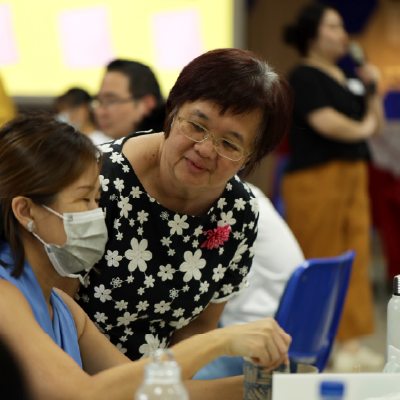
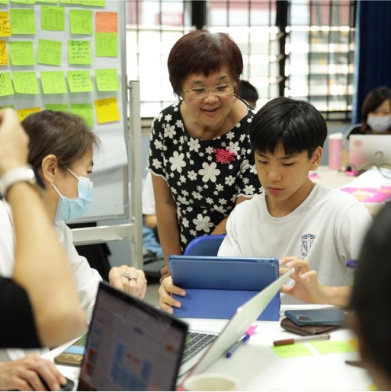
Rebecca has prioritised opportunities for HIHS students and teachers to collaborate and design learning environments, such as this brainstorming session to reimagine the school library during the Learning by Design workshops. Photos by STUCK Design.
Rebecca came to appreciate design thinking organically over the years. As the Principal of Naval Base Secondary School from 2002 to 2005, she was looking for ways to connect students with their community and expand their thinking. She found opportunities to do this through the arts. She strategically leveraged cohort experiential excursions and artistic activities that brought new meaning to the students’ school lives.
Then, as the Founding Principal of the School of the Arts (SOTA) – a position she held from 2005 to 2012 – Rebecca’s awareness of the power of design thinking expanded substantially.
She encountered what she calls a “collective spirit of experimentation, imagination, and expression” among strategic founding advisors including Dr Tan Chin Nam, Dr Milton Tan, and the designers of the new SOTA building, WOHA Architects. Through them, she discovered how design decisions could have long-term positive impacts by shaping the experiences of people for the better.
“My vision is for schools to nurture the imagination of every student, empowering them to contribute as active citizens of tomorrow.”
Rebecca Chew
HOLY INNOCENTS HIGH SCHOOL
When Rebecca joined HIHS in 2018, she was keen to use these learnings to the advantage of her new students and staff. In the years since, she has engaged the school in various design thinking initiatives and workshops with visionary design-industry figures.
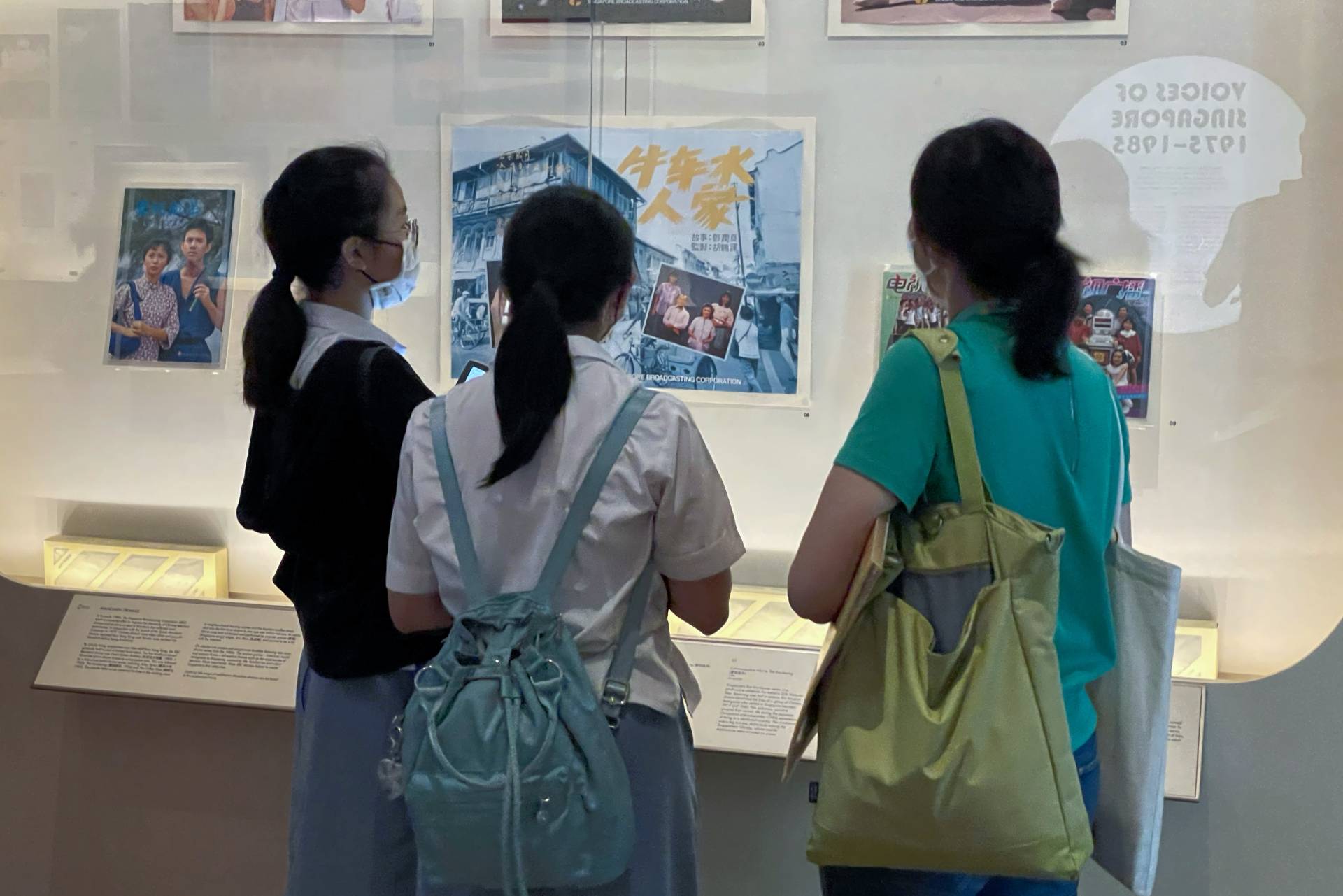
Cultivating new and meaningful ways of seeing and knowing through place-based education is a key highlight of the Mustard Seed Project. Photo by Holy Innocents’ High School.
The earliest of these design thinking initiatives, known as the Mustard Seed Project, is still being run today. In fact, Rebecca is taking steps to review and improve this interdisciplinary programme for the years ahead. Its value, she says, lies in community engagement and collaboration across subject areas. Through the Mustard Seed Project, students work in teams to apply the concepts, skills, and knowledge they have acquired in and out of the classroom, to address complex real-world issues – ranging from the growing intergenerational gap to climate change.
While addressing real-world problems, students are encouraged to adopt new ways of seeing and doing by interacting with others beyond their immediate school context. “Through these encounters, teams of students empathise with the needs of others, which is an important first step in being changemakers,” she explains. “These hands-on experiences help develop our students’ 21st-century team competencies and empower them to make a difference,” she adds.
Last year, in another successful example of embracing design thinking in teaching and learning, HIHS participated in the Learning by Design initiative. Industry partner STUCK Design led mixed groups of students and staff in collaboratively reimagining the school’s library space, which was underutilised, using the design thinking process.

HIHS students and teachers worked together in the same teams to define problems and opportunities for the reconfiguration of the school library during the Learning by Design workshops. Photo by STUCK Design.
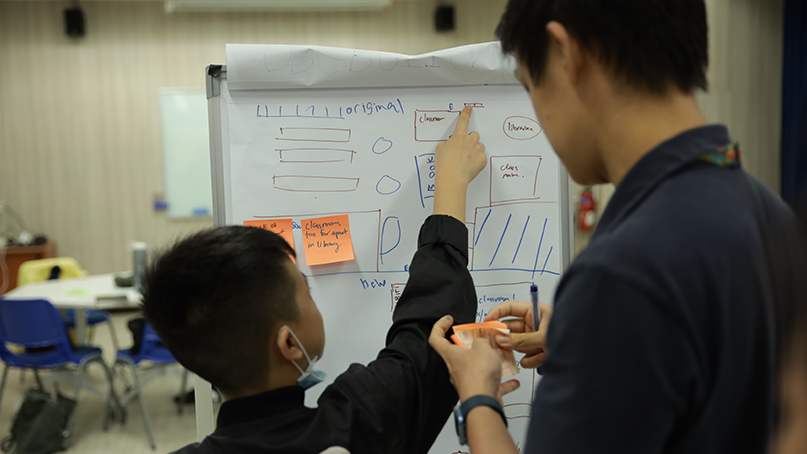
HIHS students and teachers worked together in the same teams to define problems and opportunities for the reconfiguration of the school library during the Learning by Design workshops. Photo courtesy of Holy Innocents’ High School.
Through a series of workshops, STUCK asked the teams to think beyond the space itself and collaboratively reimagine what it means to teach and learn. Participants empathised with each other to define the attributes of good teaching and learning spaces. They developed and tested their ideas for the space by building scale-model prototypes, finally reconfiguring the library successfully in ways that may not have otherwise been imagined.
“One of the key takeaways from the Learning by Design workshops was the importance of solving problems as a community"
Rebecca Chew
HOLY INNOCENTS HIGH SCHOOL
Students are now making great use of the redefined library spaces. Teachers, inspired by the insights and sense of agency they gained from the process, continue to apply design thinking principles in their departments. This is fostering an ongoing culture of innovation and improvement at HIHS. Rebecca sees the potential of applying the same approach to reimagining other learning spaces and experiences in the future.
“Everyone has the potential to unlock creativity through design thinking,” says Rebecca. She is inspired when she sees HIHS students participating actively in the creation of meaning and contributing to the common good. These are, after all, strong first steps toward sensemaking in the new world.
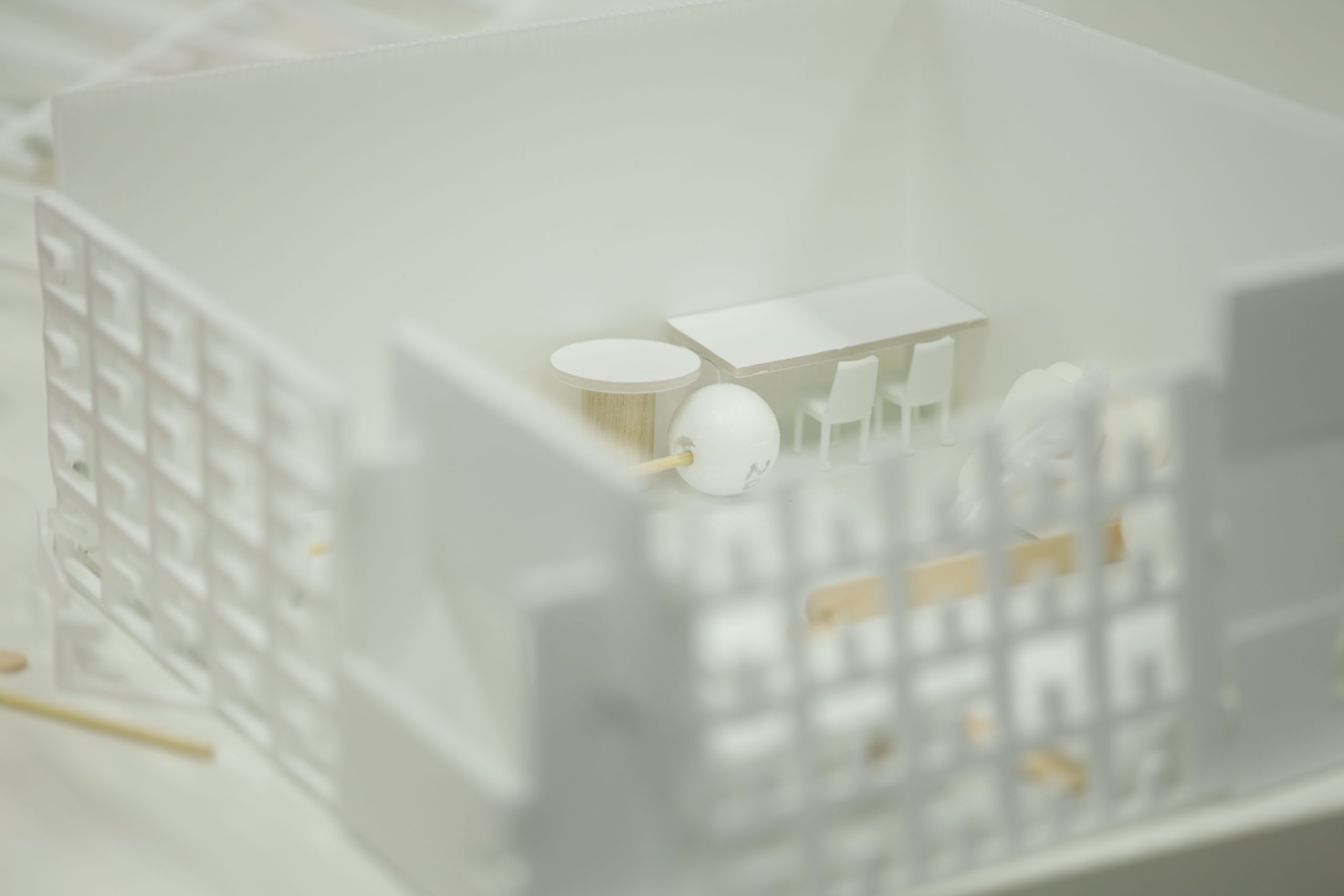
Models of ideas for how to reuse the interior of the HIHS library were made during the Learning by Design workshops. Now remodelled, the library better serves the needs of students and teachers with a variety of partitioned zones that allow for multiple uses of the space. Photo courtesy of HIHS.
